World 🢖 Asia 🢖 Brunei, centre of Bandar Seri Begawan
Islamic shrines 🢔 Religious architecture 🢔 Architectural wonders 🢔 Categories of wonders
Wonder
Sultan Omar Ali Saifuddin Mosque
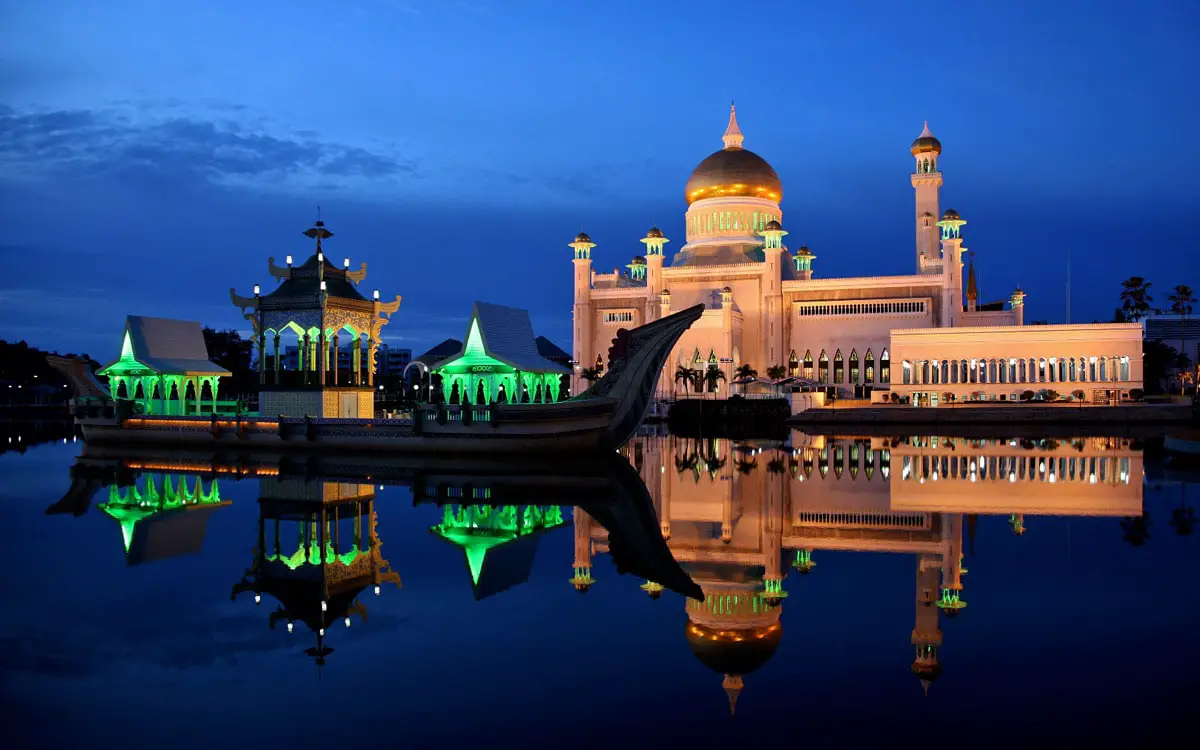
 In short
In short
The best known landmark and symbol of Brunei is Sultan Omar Ali Saifuddin Mosque. This elegant structure was constructed in 1958 and symbolises the rise of the Sultanate of Brunei and its religion – Islam.
 43.3%
43.3%
GPS coordinates
Name in Malay
Age
Religion
Map of the site
If you see this after your page is loaded completely, leafletJS files are missing.
 In detail
In detail
History
Prosperity from oil industry
Sultans of Brunei introduced Islamic faith in their country in the 15th century and Islamic faith has created the unique Malay identity in this part of Borneo island. The power of sultans though declined due to internal conflicts and in the late 19th century British Empire took over the control of Brunei.
Oil was discovered in this small country (British protectorate) in the late 1920s and large scale oil extraction started in Brunei.
After World War II there was started an ambitious program for the development of the economy in Brunei aimed at the decrease of the dependency on the oil industry. This program was initiated and led by Sultan Omar Ali Saifuddien III – the 28th sultan of Brunei. Many aspects of this program failed – attempts to establish competitive craft industries and rubber production were not too successful, but nevertheless, this program laid the basis for the transformation of Brunei into a modern state.
Soon after (in 1963) in Brunei were found additional reserves of oil and due to this, other kinds of local industry were not competitive and for now, it looks like Brunei will maintain its wealth for decades to come just by extracting the oil.
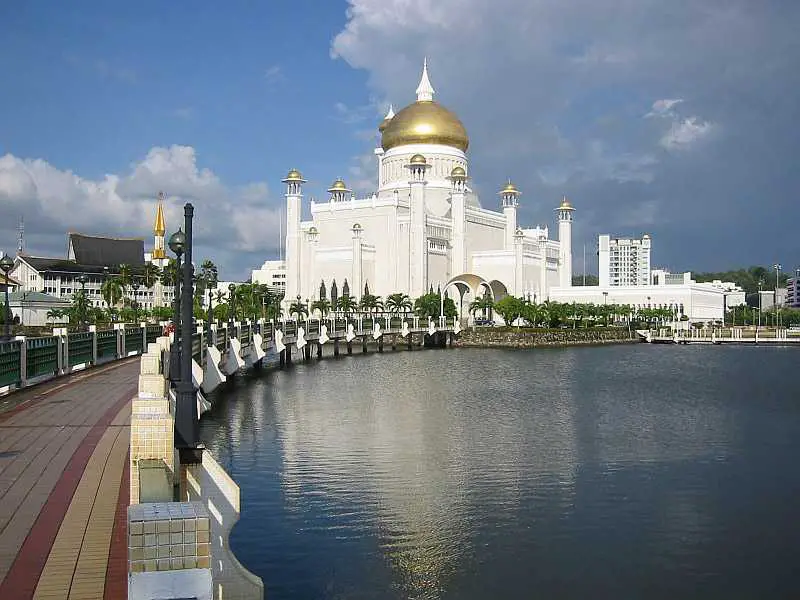
Religious centre of the country
Among the other activities of the development program there was planned to develop the main religious center of the country, thus facilitating the development of a closer bond between the religion and state.
Sultan Omar Ali Saifuddien III himself initiated the construction of this new mosque – a structure of unseen size and ambition for Brunei.
Mosque was designed by Italian architect Cavaliere Rudolfo Nolli (1888 – 1963) who was well known in South East Asia already before this major work.
Materials for the mosque were brought from all over the world – marble from Italy, granite – from China, chandeliers – from England, carpets from Saudi Arabia. During the construction, many millions were spent and the whole area in the center of Bendar Seri Begawan was transformed beyond recognition.
Works were completed in 1958 and the result was very impressive: the enormous, white and unusual building became the main landmark in the capital of Brunei and soon after – its most popular tourist destination. This beautiful structure was named after Sultan Omar Ali Saifuddien III – builder of modern Brunei.
Description
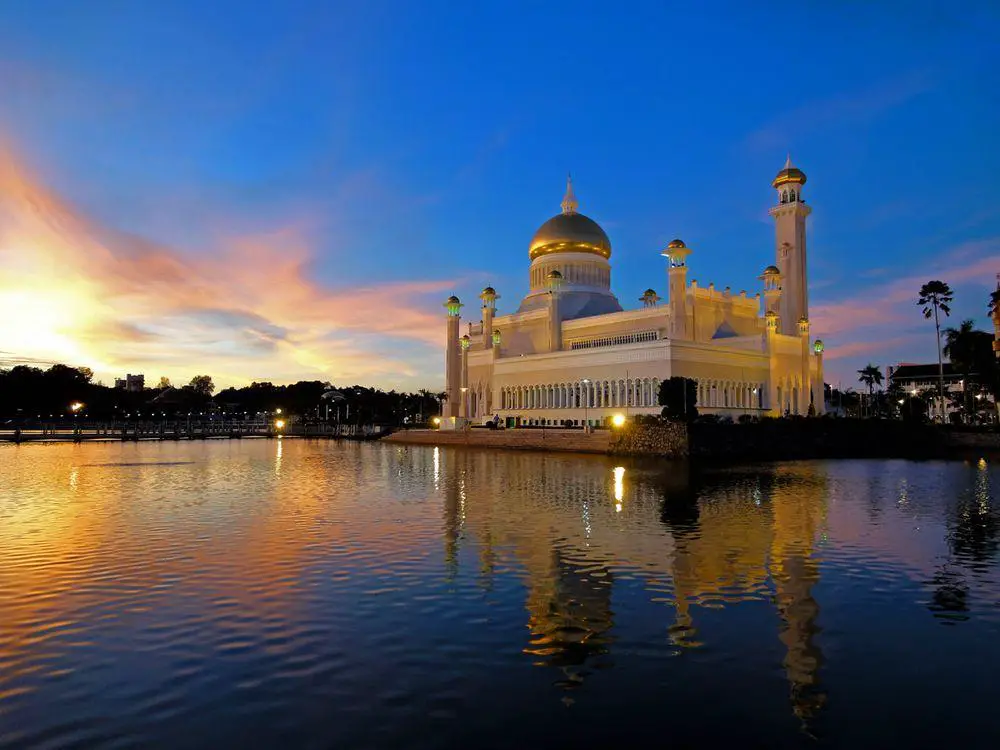
Sultan Omar Ali Saifuddin Mosque is one of the largest mosques in this part of the world. Its design was innovative for the Islamic world and at the same time, it is traditional by uniting the influence of Mughal style and European – Italian Renaissance style.
The enormous building has a large dome which is covered with golden plates. Marble minaret is the tallest structure – its height is 52 m and tourists can ascend it and enjoy the panorama of the city.
Architecture of the new mosque did not end with the outer walls of the structure. The vast area around the mosque was reshaped: there was made artificial lagoon and the mosque was placed on the peninsula of this lagoon. A garden with regular planning was set around the mosque and large trees were replanted here.
Bridges were built to connect the mosque to different parts of the city. One bridge goes also to Kampong Ayer – an unusual town built on stilts over the water.
In 1967 in front of the mosque in the lagoon was built an interesting structure – a stone replica of the 16th century Sultan Bolkiah Mahligai Barge. It was built to commemorate the 1,400th anniversary of Nuzul Al-Quran – the coming down of the Quran. Now this unusual building forms a single architectural ensemble with a mosque.
 Linked articles
Linked articles
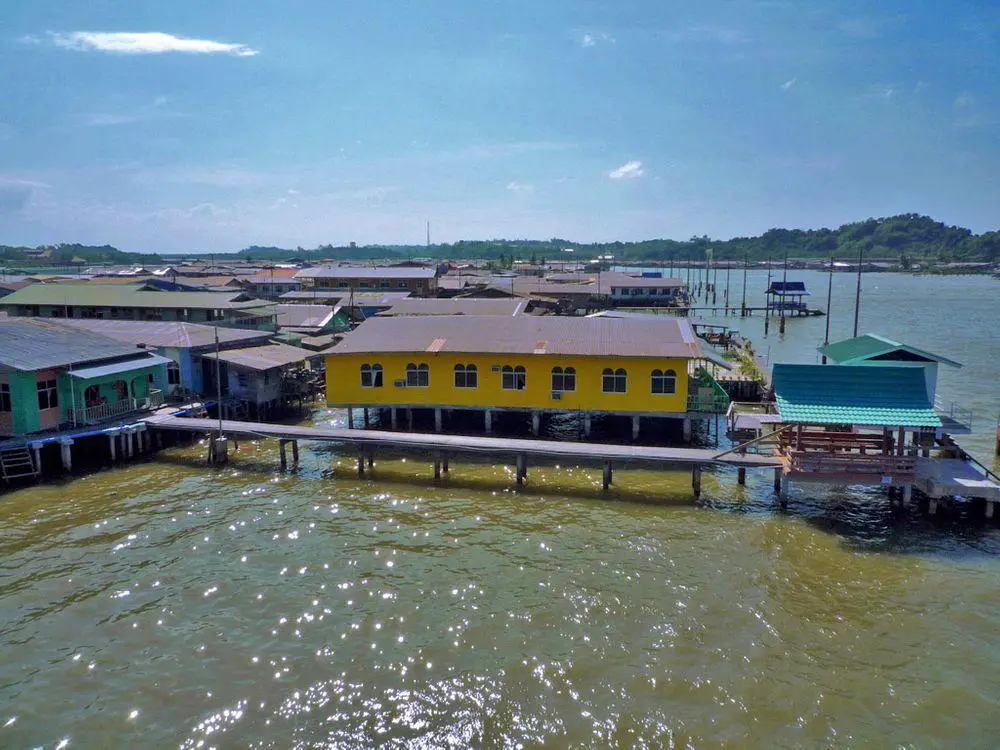
Wonders of Brunei
Most interesting landmarks in this small country are magnificent buildings from the second half of the 20th century, such as the world’s (supposedly) largest palace and one of the most impressive mosques.
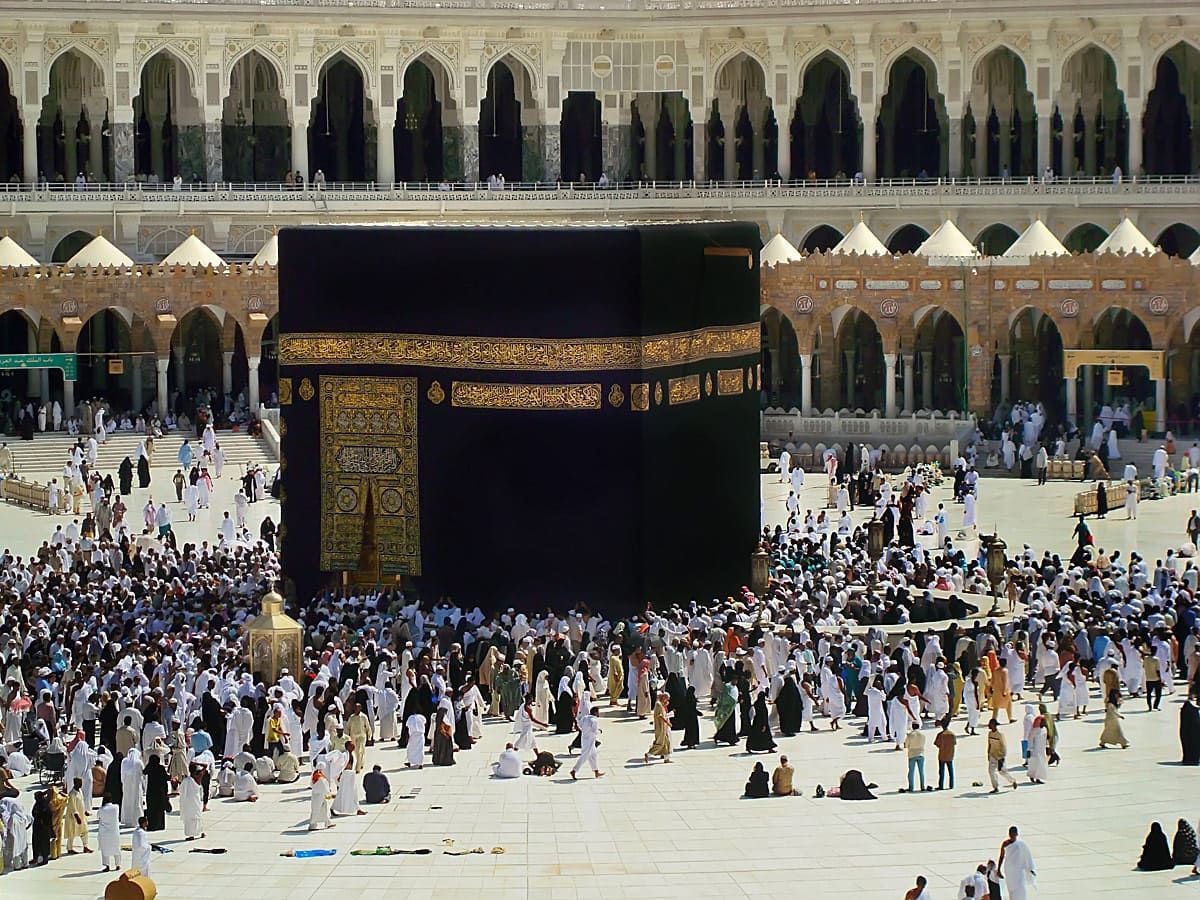
Islamic shrines
Place for worship in Islam is called a mosque. Mosques serve also for education, news exchange, and dispute settlement.
Initially, in the 7th century mosques were unpretentious, large halls for gatherings. Over time, as Islam was spreading, there developed diverse, locally adapted architectural forms of mosques.
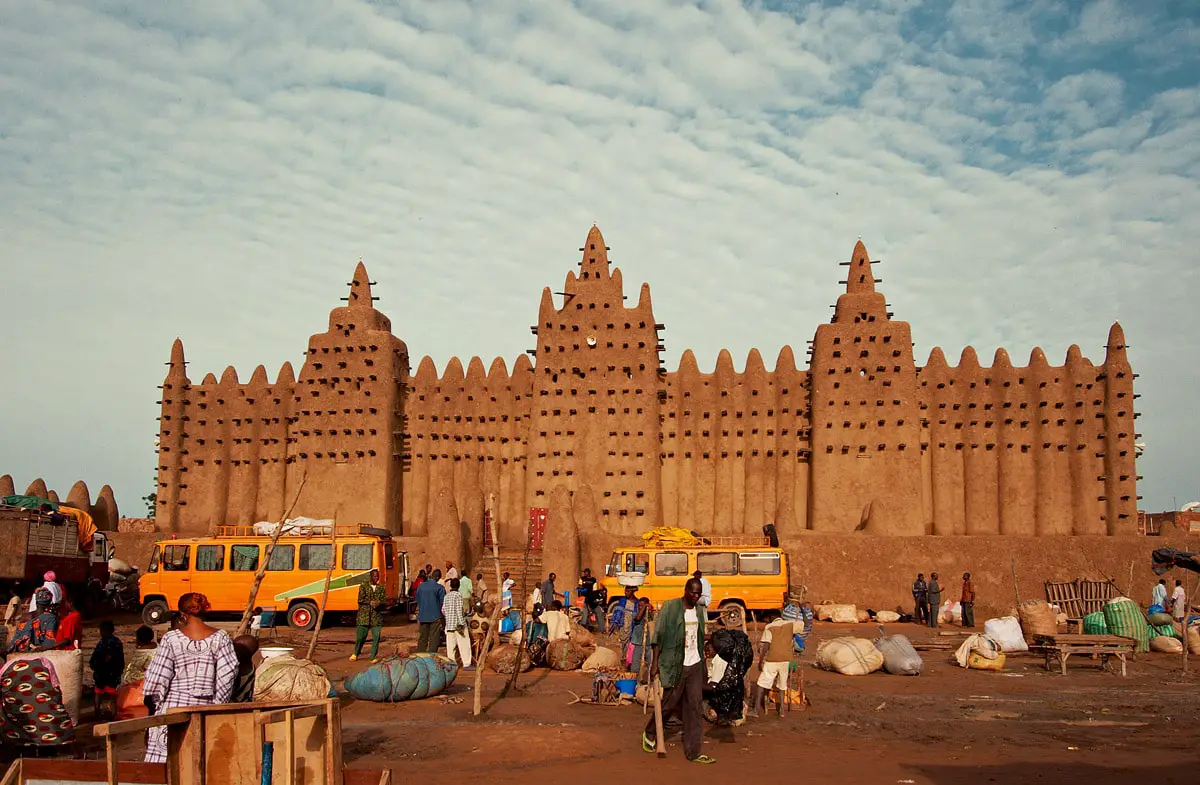
Religious architecture
Since ancient times human talents and skills have been expressed in religious architecture and arts, and traditions and rituals have evolved around pilgrimage sites. Religious buildings represent a major part of the highest achievements in architecture and crafts.
 Recommended books
Recommended books
Brunei: From the Age of Commerce to the 21st Century
Now an energy-rich sultanate, for centuries an important trading port in the South China Sea, Brunei has taken a different direction than its Persian Gulf peers. Immigration is restricted, and Brunei’s hydrocarbon wealth is invested conservatively, mostly outside the country.
Lonely Planet Malaysia, Singapore & Brunei
Lonely Planet Malaysia, Singapore & Brunei is your passport to the most relevant, up-to-date advice on what to see and skip, and what hidden discoveries await you. Admire Kuala Lumpur from the glittering Petronas Towers, climb the Telaga Tujuh waterfalls in Langkawi, or glide through the water village of Kampung Ayer; all with your trusted travel companion.


